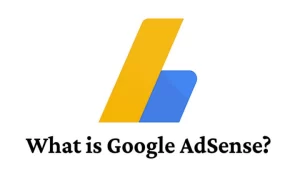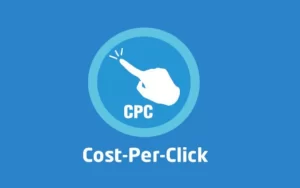Social media platforms were only tools for talking. But now they have grown into huge places for ads. Brands can reach billions of people all over the world through these ads. For people who work in digital marketing, understanding and using social media advertising is not just an option anymore. It is a must to stay important and do well. So we made this big guide to social media advertising. Are you ready?

What is Social Media Advertising?
Buying ads is a way to reach potential customers on social media sites. It goes beyond just boosting posts. It is a smart plan using data to show your brand to the right people.
Social media advertising come in many forms and locations. These range from the common sponsored posts in your feed to the paid stories that go away after one day.
Benefits of Social Media Advertising
Using social media advertising is good. It gives these five big things:
- Wider Reach: You can get to lots of people of all ages and places.
- Targeted Advertising: You can show your ad to just the kind of people you want based on what they like, what they do, and who they are.
- Engagement: People can like, comment on, and share your stuff. This helps them connect with your brand.
- Cost-Effectiveness: You can choose how much money to spend. Even a small amount can get your ad to many people.
- Insights and Analytics: It shows you how your ad did, how people reacted, and if people bought things.
- Brand Awareness and Loyalty: When people see your stuff often, they know your brand. If it’s good stuff, they might keep using your brand.
Those are the top reasons ads on apps like Facebook and Instagram work great! The ability to target just the right customers cheaply and directly interact is huge. My friend’s small business grew using social media marketing.
Top 5 Social Media Advertising Platforms

Facebook: The Versatile Giant with Amazing Reach
Facebook provides one of the most complete targeting choices. This makes it a vital platform for social media advertising. The platform’s ad manager tool is simple and useful. It has detailed audience insights, retargeting abilities, and can make lookalike audiences. Ad campaigns can be fine-tuned perfectly with these features.
Key Advantages of Facebook Advertising:
- Unmatched Reach: Virtually every demographic is on Facebook. This makes it ideal for businesses wanting to reach diverse groups.
- Detailed Targeting: You can target users by location, demographics, interests, behaviors, and more.
- Varied Ad Formats: Whether you want image ads, carousel ads, video ads, or stories, Facebook’s ad platform supports them all.
Instagram: Where Pictures Tell the Story
Facebook got Instagram in 2012. Instagram is a place where people share pictures and videos. Over 1 billion people use Instagram each month. It is a good place for brands that use a lot of pictures.
Key good things about advertising on Instagram:
- People like brand stuff: Instagram users like pictures from brands. They look at the pictures if they are pretty or cool.
- Easy buying: Instagram has tags that let you buy things. It also has a way to check out right on Instagram. This makes it easy to shop.
- Young people: Most Instagram users are under 35 years old. About 71% of them are millennials or Gen Z. So brands can reach young people there.
Twitter: The Real-Time Engagement Channel
Twitter is a great channel for businesses that want to talk with people right now. The platform has video ads, chat ads, and fast mobile pages. This means businesses can run quick campaigns that work well on phones.
Key Benefits of Twitter Advertising:
- Real-Time Marketing: Twitter is awesome for jumping on trending topics. You can engage your audience in the moment.
- Reaching Influencers: Many influencers and thought leaders use Twitter. It’s a good place to connect with important people in your field.
- Direct Communication: Twitter lets you engage directly with your audience. You can easily build a community around your brand.
TikTok: The Fresh and Fun Platform
TikTok took the online world by surprise. It is a place for short videos. It appeals to young people who use it a lot.
TikTok advertising lets brands make cool campaigns. Content can spread quickly due to an algorithm that promotes creative posts over big accounts.
Key Benefits of TikTok Advertising:
- Viral Potential: TikTok’s algorithm helps posts spread far and wide. This is great for brands to get seen and gain followers naturally.
- Engaging Ad Formats: TikTok ads are fun. They include videos in your feed and branded challenges with hashtags. These let people interact with brands.
- Young Audience: If your target market is Gen Z, you must use TikTok. Its user base skews young, with high engagement levels.
Pinterest: The Visual Search Engine
Pinterest’s 442 million monthly users have a unique mindset. They often look for products and ideas to buy things. Pinterest helps people find things they want.
Key Benefits of Pinterest Advertising:
- Purchase Intent: People on Pinterest want to find new products. They use the app to look for things before they buy.
- Evergreen Content: Pins last longer than posts on other apps. This means your ads keep working for a long time.
- SEO Benefits: Pinterest is like a visual search engine. Your content can be found easily and keep bringing people to your site after you post it.
Develop an effective social media advertising strategy
Step 1: Define Your Objectives
Before you make any ads, you need to be clear about your business goals. Are you looking to make people know about your brand, get more visits to your website, or sell more things? Your goals will change how you approach each platform.
For example, if you want more people to visit your online store, you might focus on platforms like Instagram and Pinterest, where visual content strongly impacts people’s buying decisions.
Key Tips:
- Use the SMART framework to set goals that are Specific, Measurable, Achievable, Relevant, and Time-bound.
- Make sure your social media ad goals match your overall marketing plan for consistency and maximum impact.
Step 2: Know Your Audience
Social media sites give lots of info on people who use them. Knowing your fans is a big deal. Do research on the market. Use the tools from social sites. Makeup personas to guide what you make.
Key Tips:
- Look beyond age and such. Get why they do what they do – their dreams, struggles, and wishes.
- Test two versions to fine-tune your target crowd and messages.
Step 3: Choose the Right Platforms
Not all the media sites are the same. Each is unique. You need to pick the right site for your brand goals. It depends on where people like to spend time. It also depends on the kind of stuff you want to make. Facebook and Instagram work well for pictures and groups. LinkedIn is better for work and business groups.
Key Tips:
- Look at each site. See who uses it. Then pick the right one.
- Do not try too many sites. Focus on a few. Do them very well.
Step 4: Create Compelling Ad Content
The best ads online do not look like ads. They fit and add fun to people using them. If you make videos for YouTube ads or images for Instagram, make sure the stuff is good quality, matches your brand, and tells people what to do next.
Key Tips:
- Use content from real people to build trust and keep it real.
- Make your ads fit where buyers are to get more people to do what you want.
Step 5: Set Your Budget and Bid Strategy
A well-planned budget and bid approach are vital for controlling costs and boosting returns. Begin with small tests to discover what works well for your goals and audience. Consider whether you aim for reach (CPM), engagement (CPE), or conversions (CPC). Social media ad tools like ad scheduling and rotation can also help optimize spending.
Key Tips:
- Start with a comfortable experiment amount, then grow based on success.
- Regularly review ad performance to bid competitively.
Step 6: Monitor and Adjust
Social media advertising need frequent attention and changes based on results. This helps boost your return on investment by making ad delivery better. Checking ads often are vital.
Key Tips:
- Compare different ad parts with A/B testing to see which works best.
- Watch how often your ad shows to avoid people getting tired of seeing it too much.
Easy Ways to Boost Your Social Media Ad Campaigns
Test It Out
Do not stop at the present state. Keep trying new things like words, pics, and calls to act. See what works great for your people.
Reach Again
Get back to users who know your brand. They might buy more, so reaching them again is a good way to get more value.
Make It Mobile
Most people use social apps on their phones. Make sure your ads look good and work well on small screens with snappy content.
Find New Faces
Target people just like your current customers. These new lookalike people may also want your stuff, so show them your ads.
Stay On Brand
Use the same tone and style across all your marketing. People trust brands that seem reliable and familiar.
Switch Up Calls
That final nudge in your ad makes a big difference. Test various calls to action to see which gets people clicking.
Keep An Eye Out
Check how your ads perform with numbers and data. Things change, so tweak your strategy when needed to stay ahead.
How Much Does Social Media Advertising Cost?
The money you pay for advertising on social media can be different. It depends on things like the platform, who you want to see the ads, and what type of ad you want. Most businesses pay between $0.50 and $2.00 for each click when they run pay-per-click (PPC) ads. If you do a bigger campaign, it can cost from a few hundred to a few thousand dollars per month.
Things That Affect How Much You Pay
Many things can change how much you pay for social media advertising. These include:
- Targeting: Choosing the right people to see your ads is very important. You want to make sure your ads reach the people who will be interested.
- Good Content: Your ads need to be interesting and look nice. You want content that people will like and connect with.
- Looking at Data: You should always check how your ads are doing. Look at the numbers and make changes to improve your results and get more value for your money.
Important Numbers to Look at for Successful Social Media Advertisement

When you want to see how well your social media advertisements are doing, look at these key numbers:
- Engagement Rate: How many people like, comment on, share, or click your advertisement? This shows if people are interested in it.
- Conversion Rate: What percent of people do what you want, like buy something or sign up? This tracks the main goal.
- Click-Through Rate (CTR): Of all the people who see your ad, how many click on it? This ratio is important.
- Return on Ad Spend (ROAS): How much money did you make for every dollar you spent on advertisements? Calculate this carefully.
- Cost per Acquisition (CPA): On average, how much did it cost to get one new customer from your advertisement? This number is key.
FAQs
How do I know which social media platform is best for my business?
Look at where your customers hang out online. Each social media site is good for different things and has different people using it. Pick the one that fits your business goals and the people you want to reach.
Is it worth paying for advertising on social media when I can post for free?
Yes, paid social media ads can help you grow faster. You can target the right people in a way that’s hard with just free posts. Paid ads are an effective way to meet your marketing goals and get more customers.
What is the most important component of a successful social media ad?
The content is the most important part. Your ad content must grab attention, give value, and make people want to learn more about your brand. Compelling content engages your ideal customers.
How often should I run social media ad campaigns?
The rate you run ads on social media sites depends on your goals, money, and what your business does. Running ads often can help people see and engage with your stuff, but be careful of ad fatigue by testing new content and targeting options.
Which social media platform is best for advertising?
The best site to advertise on depends on your business type and what you want to achieve. Businesses targeting many people may do well on Facebook and Instagram. Those offering pro services could succeed on LinkedIn, while brands for younger folks may prefer Snapchat and TikTok.
Final Thoughts
This guide about ads on social media is just the start for your brand to get into digital ads. Good ads are not only seen but also make people feel, react, and remember. We want you to think of each ad campaign as a way to link, engage, and convince people in a digital world where being “social” and “advertising” truly blend. Ads that people remember touch their hearts and minds. They encourage action. A great ad makes people feel linked to your brand. It makes them share and react online. You should plan each ad to get people engaged and involved.


